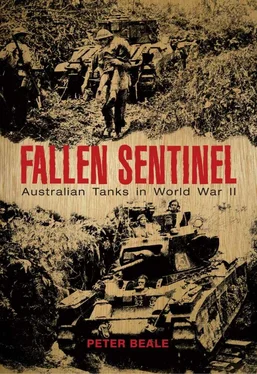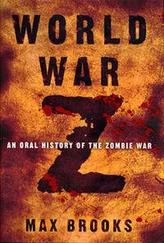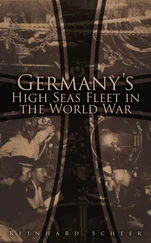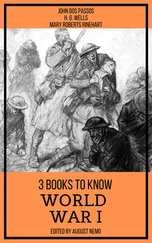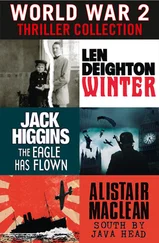Another event in 1936 which was to be significant in the development of British tanks and tank doctrine was a visit to Russia by Major General A.P. Wavell (later Field Marshal Lord Wavell) and the Assistant Director of Mechanisation, Giffard Martel, to observe manoeuvres. The number of tanks possessed by the Russians impressed them greatly, as did the tanks’ use of the suspension system developed by American J. Walter Christie. 28
Indeed, Martel considered this system so important that he decided to import a model of this tank from the United States (US) to see how it could be used in the development of British tanks. This type of tank was to affect tactical doctrine in that it provided an additional type of tank known as a ‘cruiser’. At this time there were four different types of tanks in the British Army: light, medium, cruiser, and infantry. The tactical use of these different types of vehicles was something which had not been clearly developed.
In May 1937, Neville Chamberlain became Prime Minister. As Chancellor of the Exchequer he had actively constrained the development of weapons for the British Army. Chamberlain justified this with the assertion that he had to consider the economic stability of Britain as well as its security. However, he was not by nature a supporter of a strong defensive posture, believing that peace could be secured by diplomatic rather than military means.
Chamberlain appointed Leslie Hore-Belisha as Secretary of State for War. 29Hore-Belisha had performed well as the Minister for Transport and, although he had served in the military in World War I, he was not, nor did he pretend to be, a military thinker. It was suggested to him that he could benefit from the military advice of Basil Liddell Hart. The two men found that they could work together and, indeed, their relationship was sometimes referred to as ‘the Partnership’. This meant that Liddell Hart’s ideas on the use of the Army in general and the use of tanks in particular, were fed into the ear of the man who had the greatest influence◦— apart from the Prime Minister and the Treasury◦— on military doctrine and resources.
In September 1937 the mobile division was effectively established and there was considerable discussion over the appointment of its commander, with the recommended candidates including both a cavalry officer and a RTC officer. In the end, the command was given to Major General Alan Brooke, an artillery officer. He subsequently became CIGS and Field Marshal Lord Alan Brooke and proved a very effective commander, although his previous experience seemed unusual for the head of a new type of formation.
One of the major problems of Brooke’s command was the correct employment of his formation: ‘There was on the one hand the necessity to evolve correct doctrine for the employment of armoured forces in the field of battle, and on the other hand some bridge must be found to span the large gap that existed in the relations between the extremists of the Tank Corps and the Cavalry. There was no love lost between the two. The cavalry naturally resented deeply losing their horses, giving up their mounted role and becoming “dungaree mechanics”. Thus, at this point, there was no clear doctrine as to how armoured forces should be used.’ 30
In December 1937, Hore-Belisha sacked Sir Cyril Deverell and appointed Lord Gort as CIGS. In January 1938 the new Army policy emphasised home and imperial defence, leaving the continental force as the lowest priority. This was, in part, due to Liddell Hart’s conviction that the continental role was the least important task of the Army. This he conveyed to Hore-Belisha and the resulting economies from not having to provide a continental force were warmly welcomed by the Treasury.
In November 1938 the General Staff decided to form a second mobile division in Egypt with Hobart as its commander. The 1st Mobile Division was renamed the 1st Armoured Division in February 1939 and was somewhat reduced in size. In the same month, Cabinet acknowledged that the British Field Force must be brought up to continental standards.
All these changes in strategic policy made it difficult for the commanders at lower levels to determine exactly how they should employ the troops they commanded, which in turn made it difficult to establish appropriate training programs. Fortunately, the crew and collective training conducted by Hobart in Egypt ensured that the forces fighting there in later years were very capable of carrying out their operational duties.
Tank doctrine after 1939
Up to the outbreak of war there had been little opportunity for any tank forces to test their tactics in combat. There had been some opportunity for the forces that fought in the Spanish Civil War to scrutinise the way their tanks operated and decide how they should work both on their own and with other forces. However, the numbers employed and the difficulties of terrain made it impossible to draw useful lessons from those operations.
Tanks were also used by the Russians against the Japanese on the borders of Manchuria in 1938 and 1939, although details of these actions did not reach the European armies and had no effect on tank doctrine. 31In Britain, the only opportunity to test tactics was during exercises which were so restricted and infrequent that they were much too small a sample from which to draw valid conclusions.

Calais, June 1940. A close support A9 tank sits damaged and abandoned. It belonged to the British 1st Armoured Division, many of whose tanks were so badly prepared that they went into action without ammunition for the 3-in howitzer and without telescopic sights (Tank Museum image).
The first armoured troops to gain useful experience of combat, other than the Russians in Manchuria, were the Germans fighting in Poland. The campaign was a brief one, but it certainly allowed the Germans to test various techniques, in most cases extremely successfully. These involved the integrated use of tanks, mobile infantry and aircraft, and adopted the general principle of bypassing points of resistance and striking at rear areas to demoralise their opponents, thus demonstrating the virtues of the ‘indirect approach’. These operations were observed as far as possible by other military forces. Whether they learnt from them is difficult to say. The problem for Britain was that its tank forces remained very small and poorly armed. The rate of supply of weapons was also very slow.
The British armoured forces that faced the might of the Germans in France on 10 May 1940 comprised the reconnaissance cavalry units attached to the infantry divisions, the 1st Army Tank Brigade, and the 1st Armoured Division which was still in England. These were used in action in very piecemeal attacks. The only really organised attack was that on 21 May 1940 by the 1st Tank Brigade in conjunction with the 50th Infantry Division at Arras. This caused the German forces some concern, but the British were soon brought to a halt because of the very small numbers of tanks available to support the infantry.
The 1st Armoured Division landed in the west of France and advanced as quickly as possible towards the Germans; once again the tanks were thrown in piecemeal and were forced to retire at high speed. Almost all the British tanks were left behind in France. Fortunately, the bulk of the crews were able to find their way back to England and thus form the nucleus of the armoured forces that would now have to be recreated almost from scratch.
In terms of doctrine, what did they learn from the experience of these few weeks fighting in May and early June of 1940? One person who was able to draw lessons from the fighting in France in 1940 was Brigadier Vyvyan Pope, who acted as Armoured Advisor to the Commander-in-Chief, Lord Gort. 32Pope had been involved in most of the tank fighting in France and noted many deficiencies both in doctrine and in equipment.
Читать дальше
